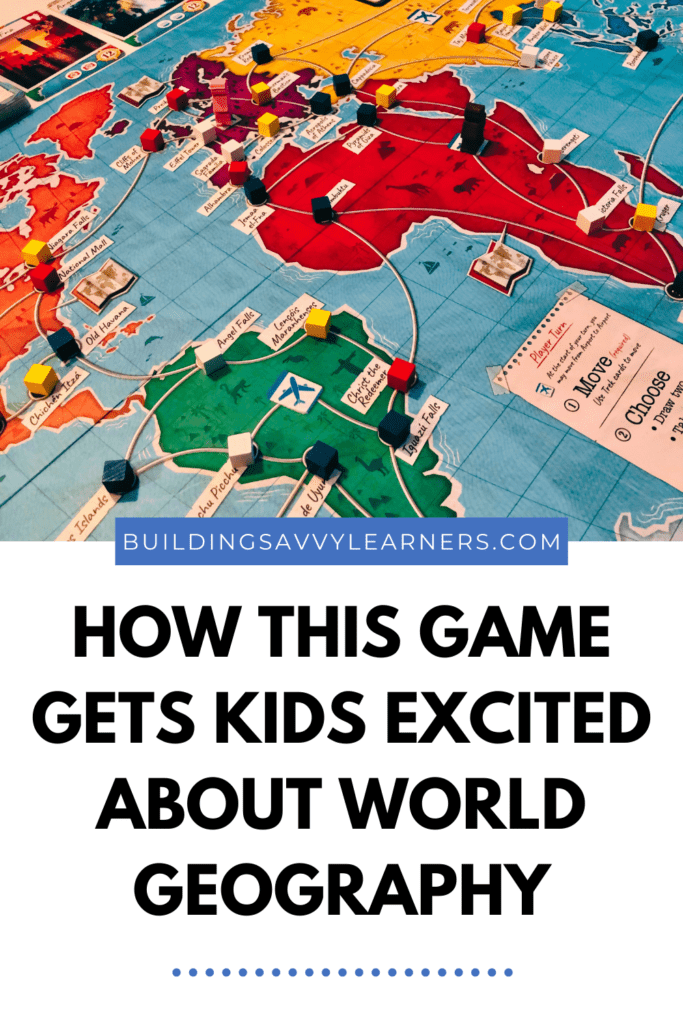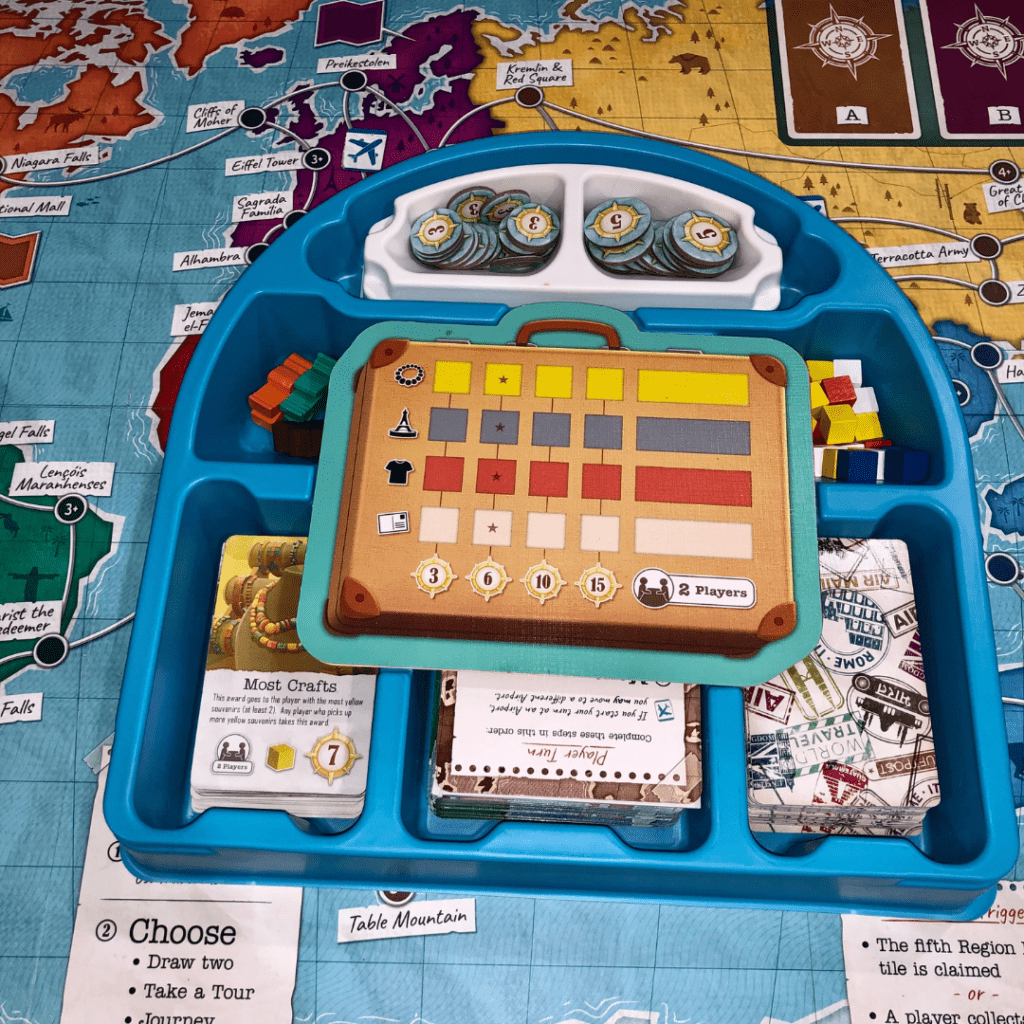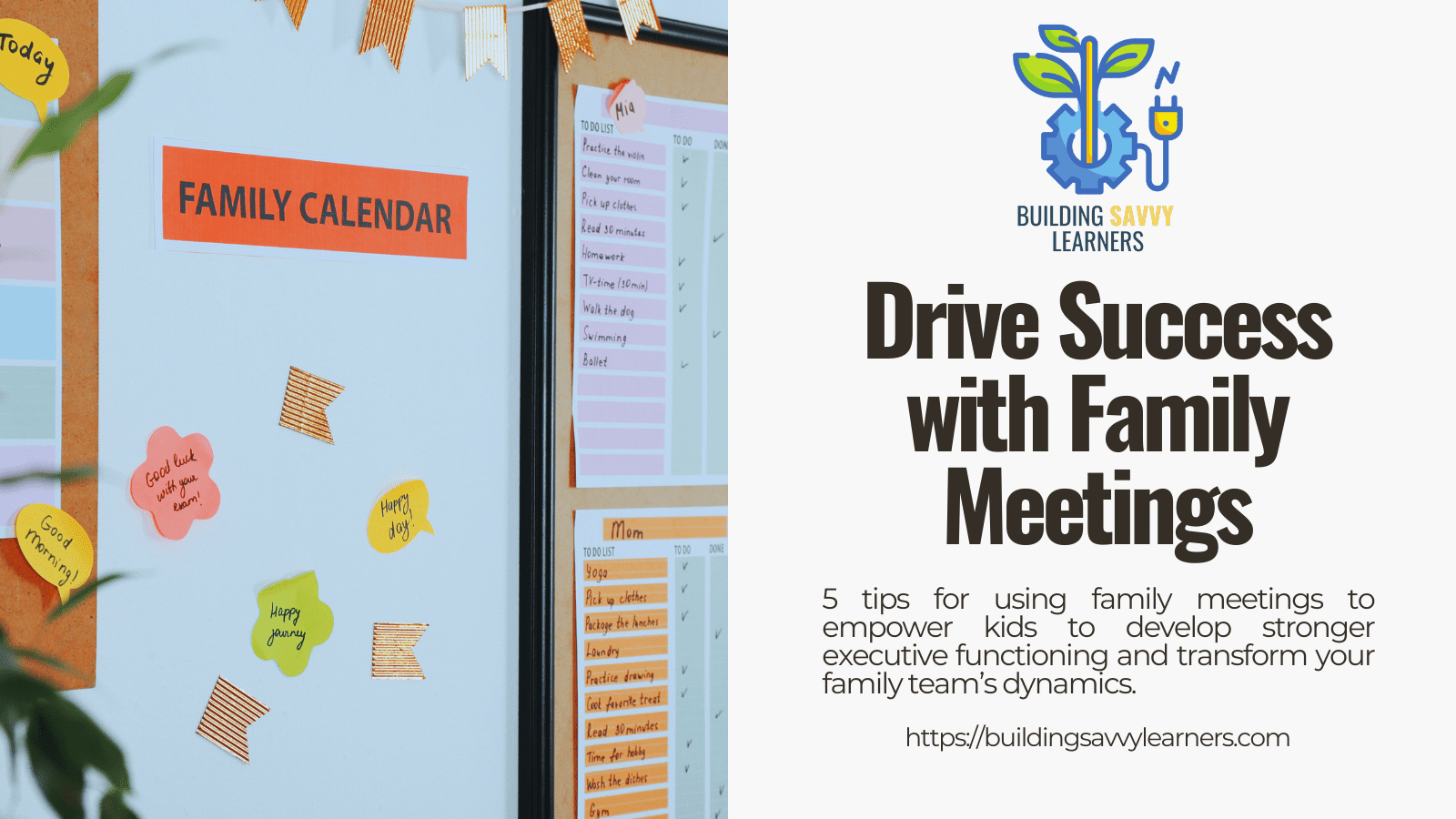Trekking the World, Underdog Games, 2020
Players: 2-5
Ages: 10+ (but could easily be played with 8+)
Time: 30-60 minutes
My husband and I have always loved playing board games. Some of my favorite childhood memories center on playing games every weekend with family members. We wanted to pass on this tradition to our own children, and we are so excited that our tween is finally old enough to play strategy games with us.
Among the strategy games we’ve introduced so far, Trekking the World has been her favorite.

(Note: This post contains affiliate links. As an Amazon associate, I earn from qualifying purchases. That means if you click on a link and make a purchase, I will get a small commission at no additional cost to you. To learn more about why I use affiliate links, you can read my disclosure policy.)
Trekking the World: The Game
Players trek around the world to collect souvenirs (colored cubes) and be the first to visit must-see destinations. Card collection is the main mechanism for the game. Players collect cards of different colors and values, and these cards are used for movement or traded in for destination cards. Along the way, players compete to fill their suitcases with the most souvenirs or clear continents to get bonus victory points. The game ends a player completely clears the fifth continent of its souvenir cubes or collects 5 destination cards.
The game mechanics of Trekking the World are easy to learn, and the artwork in the game is amazing. Each destination card has a detailed description of the location that enhances kids’ awareness of world landmarks.


The Skills
Board games are a great way to develop social skills and executive functioning for kids. On those counts, Trekking the World is a match.
Trekking the World is a great game for building planning skills. Certain destinations are worth bonus victory points and are claimed by trading in sets of cards. For example, a player would claim the Great Barrier Reef by a) visiting that location, and b) turning in two blue cards and one red card. As a result, players have to manage their hands carefully to make sure they can reach that destination first while holding the correct combination of cards. From an executive functioning perspective, this is a good game for practicing those skills.
This game also develops kids’ understandings of world geography. The continents are presented in different colors on the board, and the destination cards represent their continent in the upper right corner. The beautifully illustrated destination cards highlight a major attraction for each destination, while the back contains at least 2 paragraphs of detailed description of the location.

Math is also necessary to calculate the winner at the end of the game. Players add up all of their destination cards, tiles awarded for having the most souvenirs in a color category, points awarded for the contents of their suitcase, and any victory point tokens they may have received throughout the game. The score sheet neatly chunks this information to help with calculations. Players need addition skills through the tens and low hundreds to calculate the final score.
The Ages
Trekking the World recommends that players be 10+, but I would comfortably introduce this to an 8-year-old. There is a little bit of reading involved to play it at a basic level. In addition, there is a fair amount of planning and strategizing necessary to win the game. Still, we noticed that our daughter rapidly improved from game to game (eventually beating us!), and the grownups could enjoyably play this game without children.
Replayability
Trekking the World has strong replayability. Each game takes 30-60 minutes to play, but it feels like a very different game each time because of changing game elements. For example, the number of players determines the value of the souvenir cubes collected in the suitcase, making them more valuable in a game with 3 or more players. There are also special “journey cards” in each game which can affect the strategy. We have played Trekking the World several times with 2 and 3 players, and the strategy changed a bit each time.

Trekking the World: Recommendations
Trekking the World wins both the kid and teacher-parent vote.
What the kid says:
Sydney (10) reports that Trekking the World is one of her favorite games because it keeps her interested every time she plays. She likes the geography and informational text aspects of the game. It’s also been a good family game for her to practice and refine her strategic thinking. She enjoys trying to calculate everyone’s scores mid-game to plan her next moves, and the final score sheet provides a good structure to debrief. On more than one occasion, she’s noticed gaps in her gameplay where she deemphasized one part of the game and consequently lost. Recognizing those errors is an important part of learning, and it’s helping her grow as a thinker.
What the teacher-parent says:
I would (and sometimes do) play this game without my child. This is fundamentally a solid game, and it has the perk of facilitating geography knowledge. The pieces are well-crafted, and I LOVE the storage case that fits inside the box. It has separate compartments for each type of game piece, which makes set up and clean up a breeze. On the parenting side, that is a huge win for a game this elaborate and helps justify its price.

Overall Recommendation
This is not a game I would have used in the classroom. We wouldn’t have had enough time to get through the game most days, and typical classroom chaos wouldn’t mix well with games with so many pieces. So unlike some of my previous game recommendations, I recommend this game exclusively for home and homeschool use.
If you’re looking for a fun, family-friendly board game with added educational value, Trekking the World is the perfect addition for your gaming library. This would make a great birthday or holiday gift for a tween (ages 8 to 12) or teen board gamer. With strong replayability, even as a two-player game, Trekking the World is a fun way to explore the famous places from your dining room table. 5 out of 5 stars.









